-
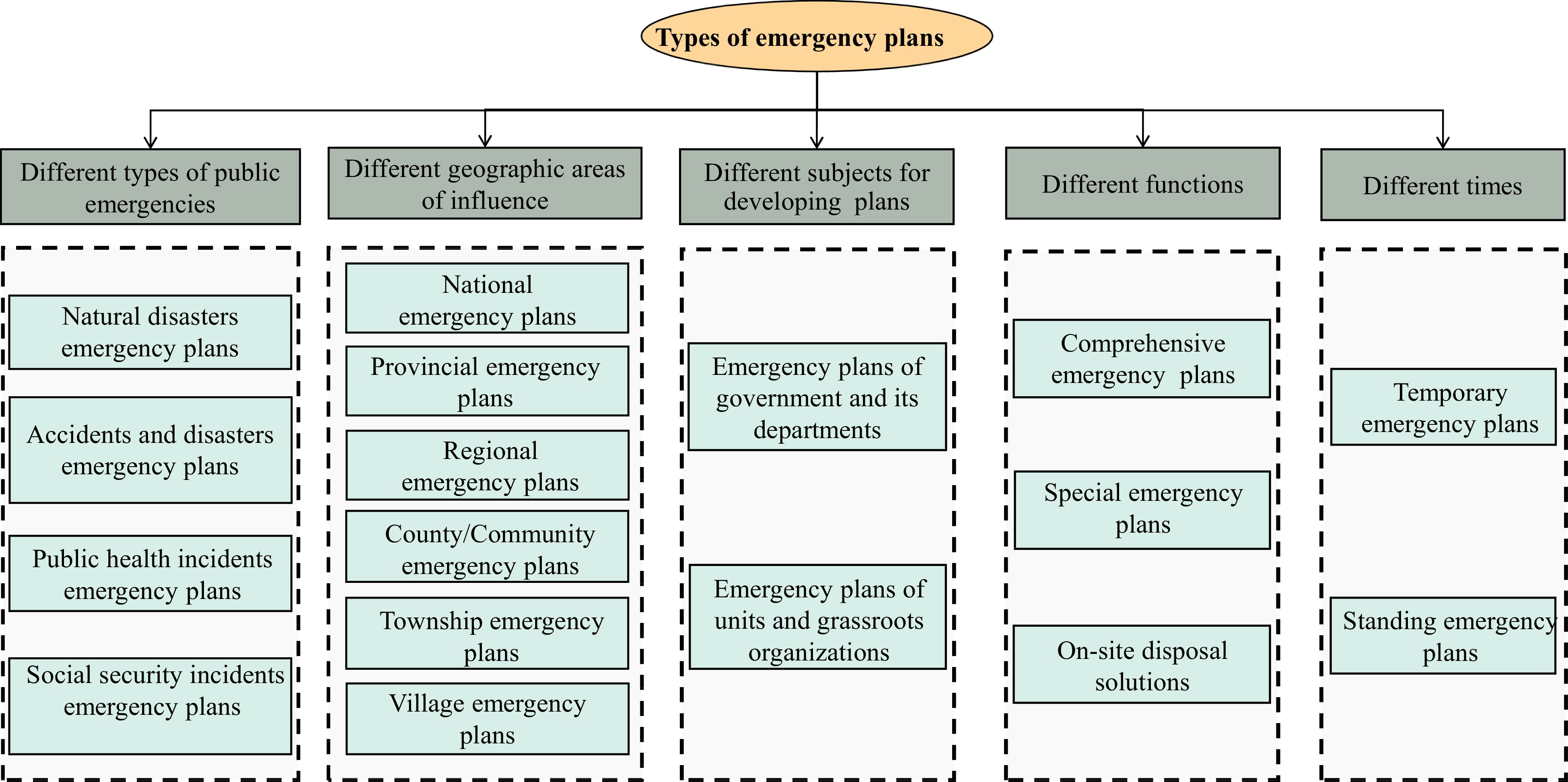
Figure 1.
Types of emergency plans.
-

Figure 2.
The emergency response process of Wenchuan earthquake.
-
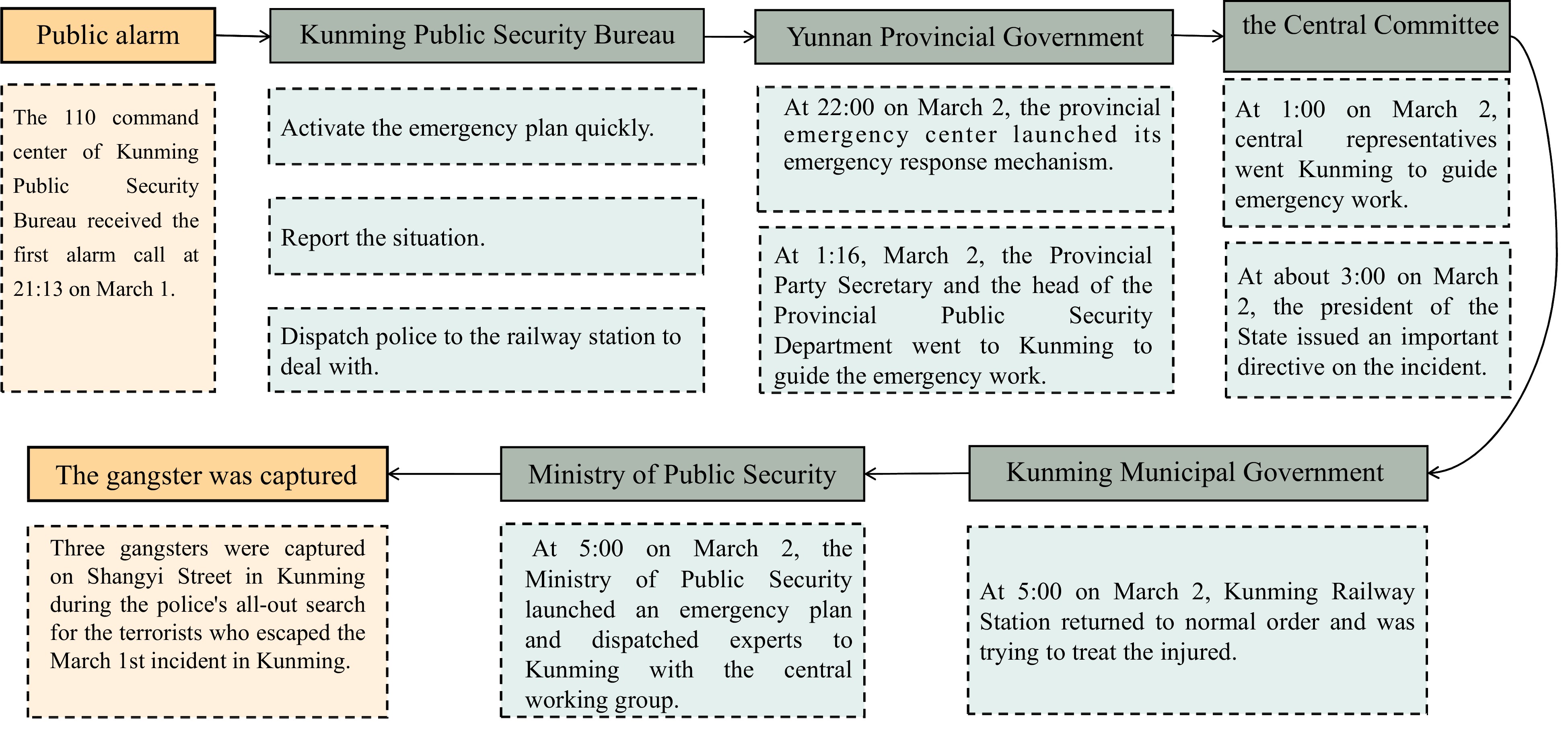
Figure 3.
Emergency disposal process of Kunming railway station violent terrorist incident.
-
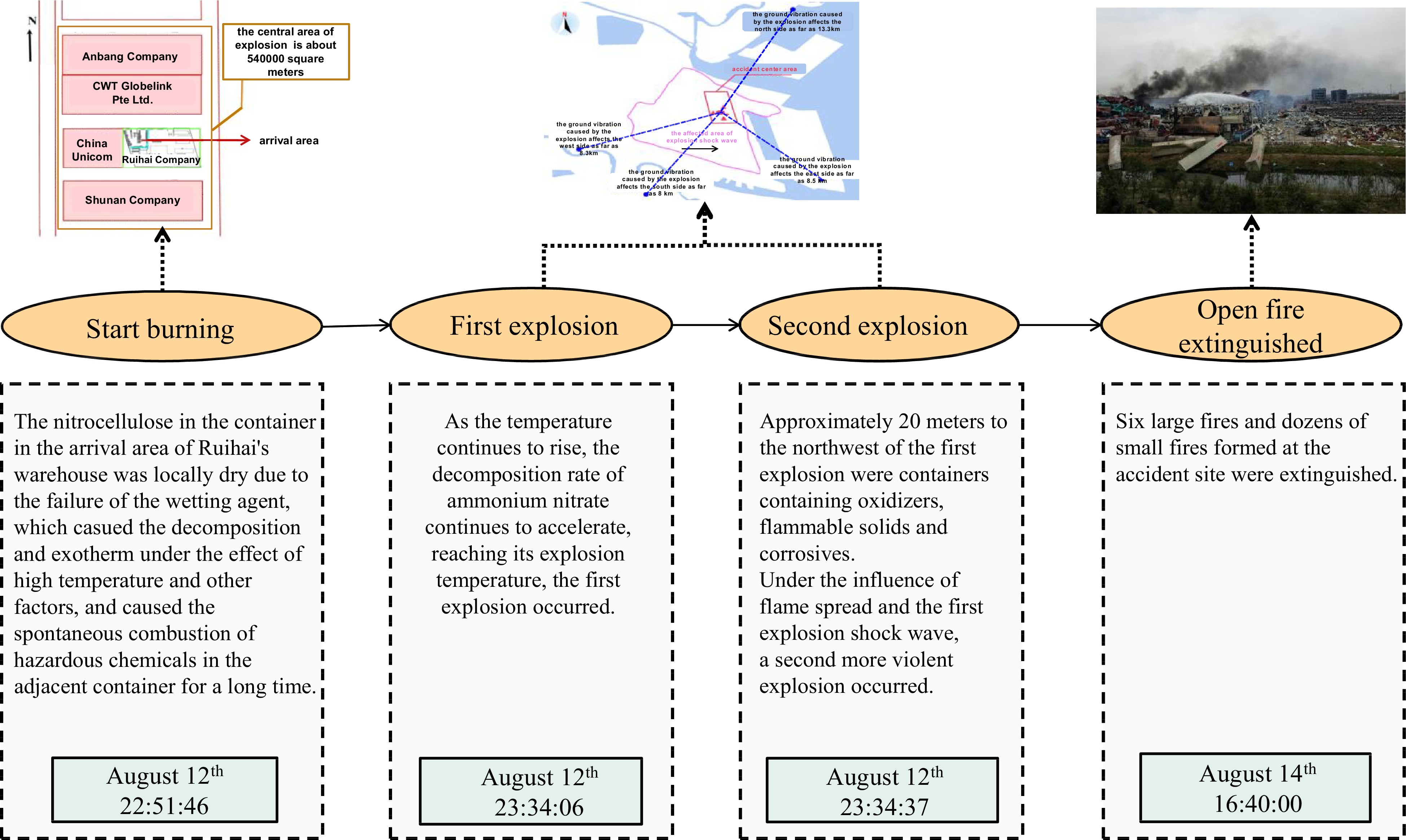
Figure 4.
The order of events of the explosion accident in Tianjin harbor.
-
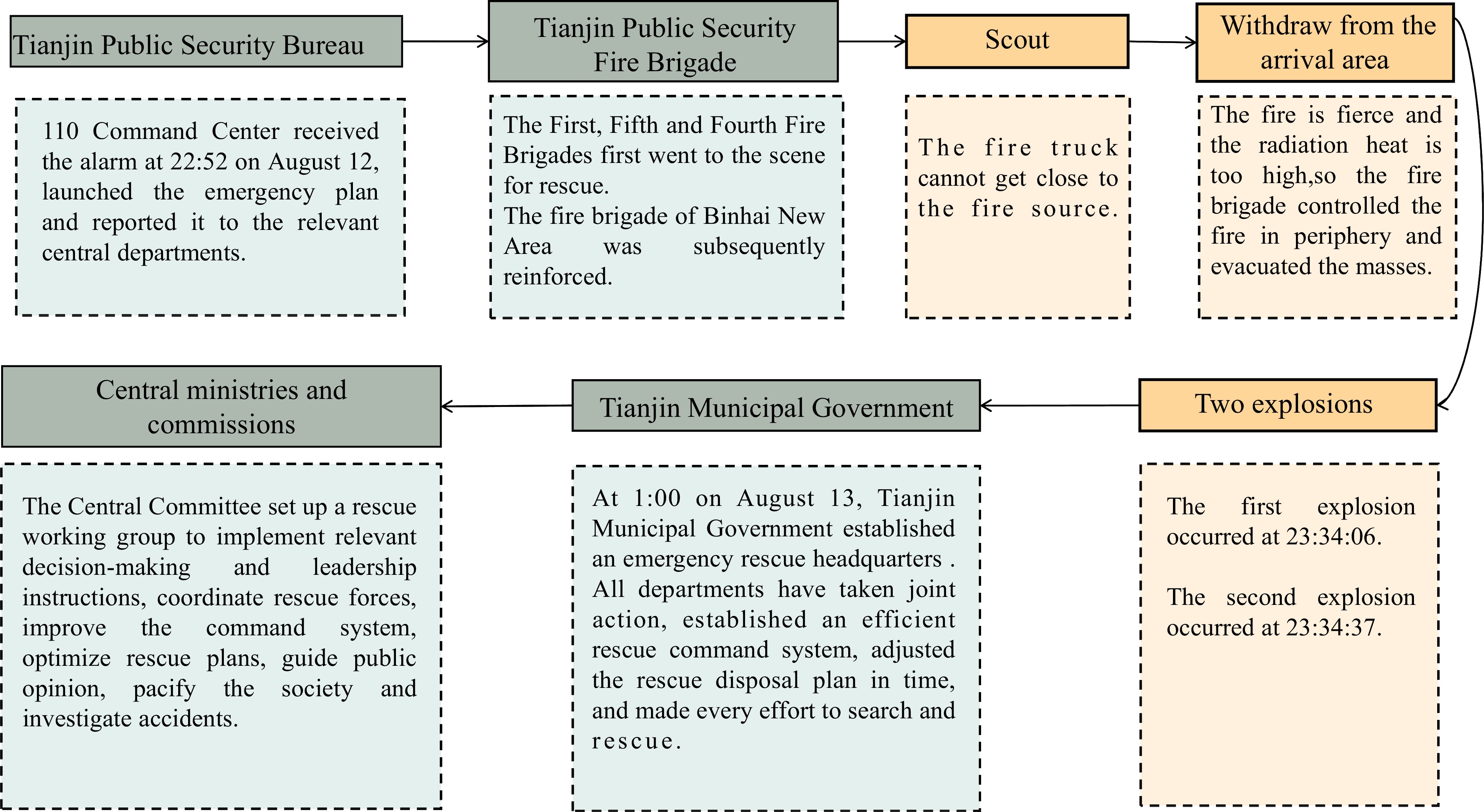
Figure 5.
Emergency disposal process of the explosion accident in Tianjin harbor.
-
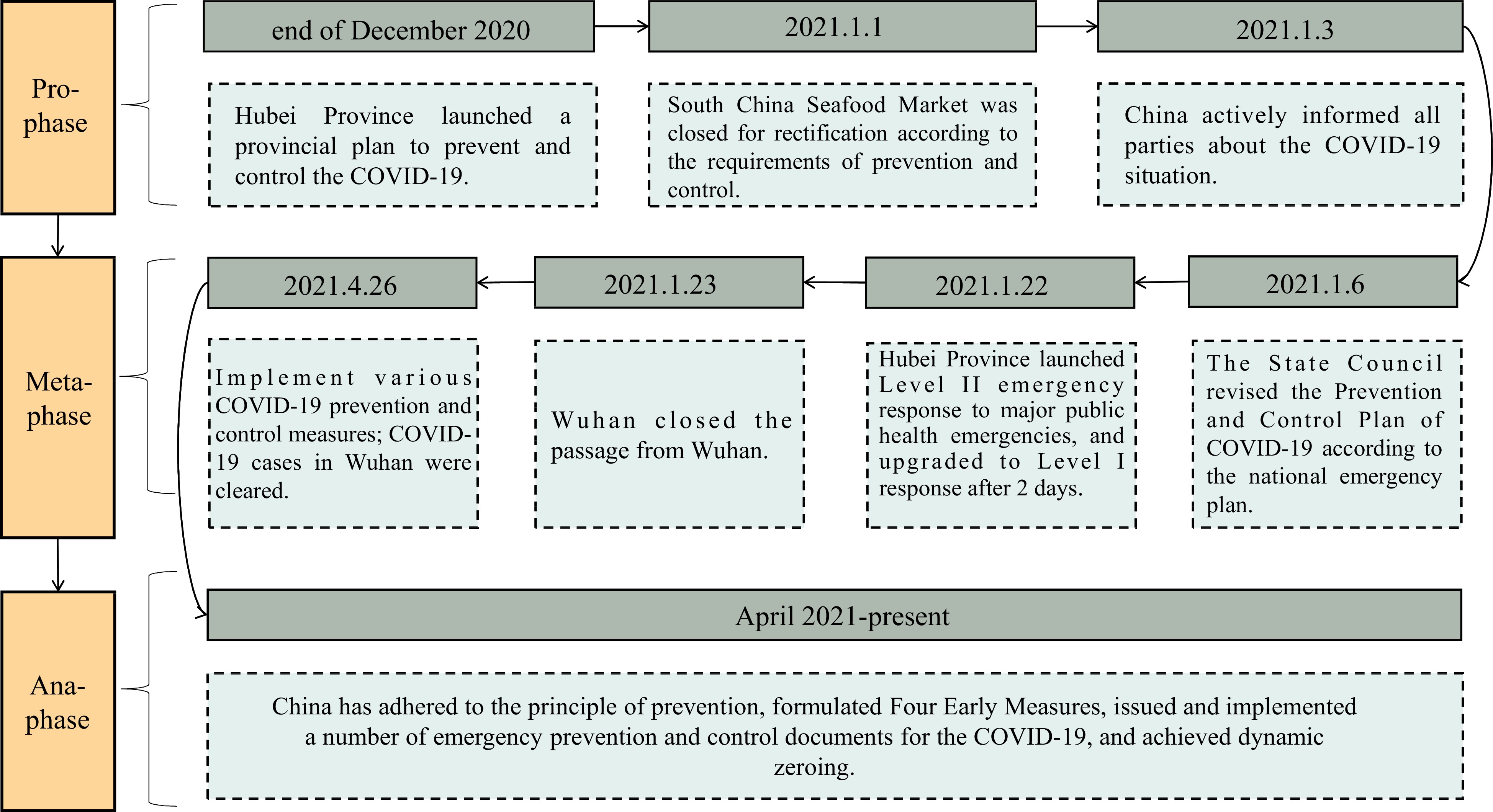
Figure 6.
The important initiatives made by China during the COVID-19 epidemic.
-
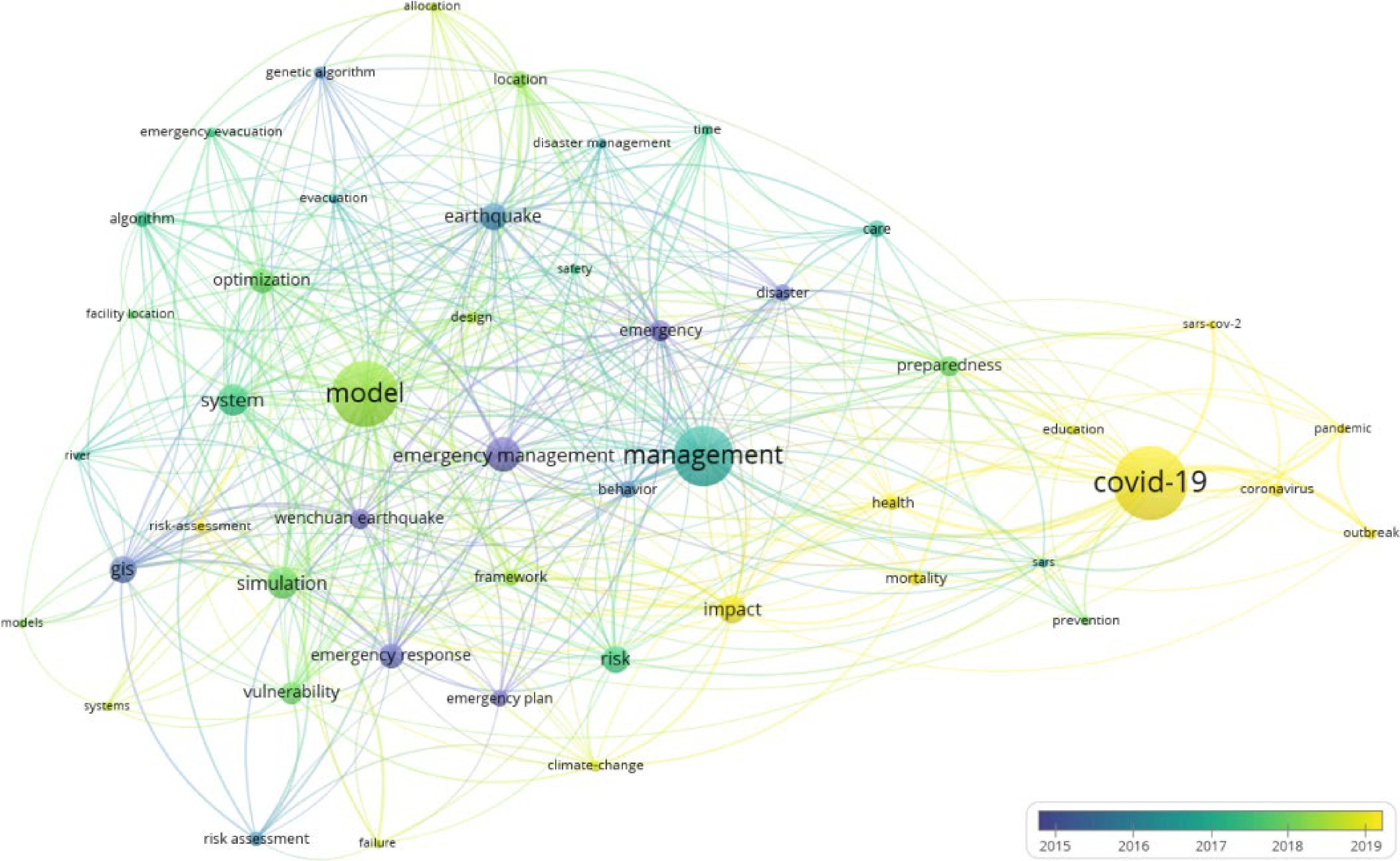
Figure 7.
The keyword overlay visualization in all databases of SCI.
-
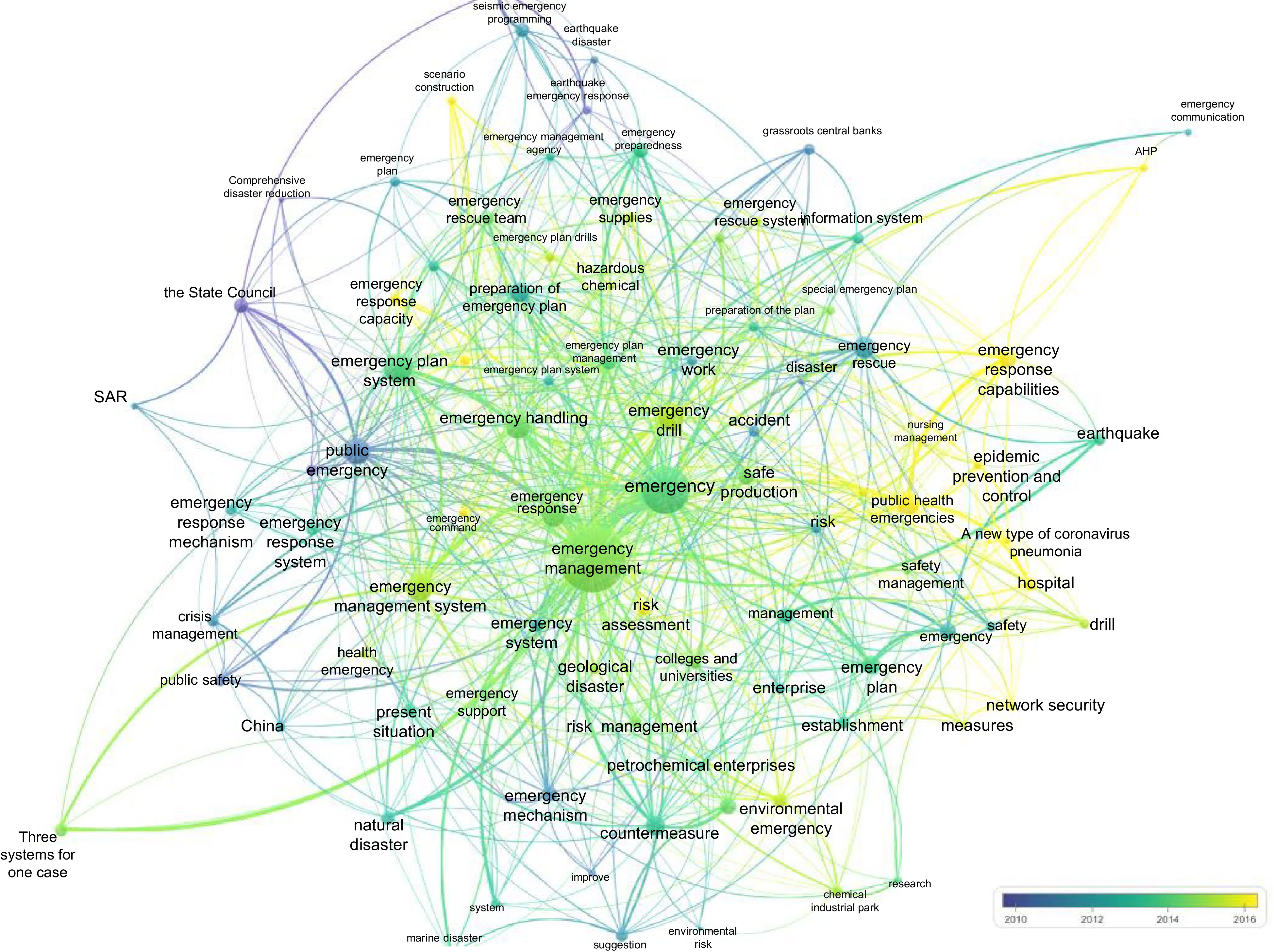
Figure 8.
The keyword overlay visualization in CNKI.
-
Public emergencies Explanation Natural disasters Includes flood and drought disasters, meteorological disasters, earthquake disasters, geological disasters, marine disasters, biological disasters, forest and grassland fires, etc. Accidents Includes various safety accidents of industrial, mining, commercial and other enterprises, traffic accidents, public facilities and equipment accidents, environmental pollution and ecological damage accidents. Public health incidents Includes the epidemic situation of infectious diseases, mass diseases of unknown causes, food safety and occupational hazards, animal epidemics, and other events. Social security incidents Includes terrorist attacks, economic security incidents and foreign-related emergencies. Table 1.
Classification of public emergencies.
-
Component Main content I:
IntroductionIncludes purpose, scope and applicability, incident management activities, authorities and key concepts. II:
Planning assumptions and considerationsNRP is based on this section, it mentions assumptions that events are usually managed at the lowest possible geographical, organizational and jurisdictional level. III:
Roles and responsibilitiesIncludes state, local and governments, federal government, nongovernmental and volunteer organizations, private sector and citizen involvement. IV:
Concept of operationsThis section describes the Federal coordinating structures, processes, and protocols employed to manage Incidents of National Significance. These coordinating structures and processes are designed to enable execution of the responsibilities of the President through the appropriate Federal departments and agencies, and to integrate Federal, State, local, tribal, NGO, and private-sector efforts into a comprehensive national approach to domestic incident management. V:
Incident management actionsIncludes actions and NRP operations under the HSAS threat conditions. VI:
Ongoing plan management and maintenanceIncludes coordination, plan maintenance and the National Incident Management System (NIMS) integration center. VII:
AppendixesIncludes a glossary of key terms, list of acronyms and authorities and references. VIII:
AnnexesIncludes emergency support function annexes, support annexes and incident annexes. Table 2.
Content framework of the US's emergency plan.
-
Component Main content I:
General principlesIncludes preparation purpose, preparation basis, guiding ideology, classification and grading, scope of application, working principles, classification and grading of emergencies. II:
Organizational system and responsibilitiesRefers to the organization (department) and its responsibilities for the smooth operation of the emergency plan, including the leading organization (department), administrative organization (department), working organization (department), cooperative organization (department), expert group, etc., and defines the responsibilities of these organizations or departments in different stages of the emergency and different levels of emergency response. III:
Operation mechanismsIncludes prediction and early warning (early warning level and its release), emergency response (information report, advance disposal, emergency response, emergency end), recovery and reconstruction (aftermath disposal, investigation and evaluation, recovery and reconstruction, information release, social assistance, insurance). IV:
Emergency safeguard measuresRefers to various guarantees to deal with emergencies, including guarantees of personnel, material and property, medical care, legal system, transportation, public security, communication and information, facilities, technology. V:
Supervision and managementIncludes publicity, training, drill, evaluation, responsibility, reward and punishment of emergency plans. VI:
Supplementary principlesIncludes professional terms, effective time, reward regulations, improvement and revision of emergency plans, international emergency cooperation, implementation time of emergency plans. VII:
AppendixIncludes the address, contact information, standardized text, of relevant emergency response agencies and main responsible personnel. VIII:
NoteExplains the proper terms in the emergency plan. Table 3.
Content framework of China's emergency plan.
-
Head office Railway administration Train operation depot Railway station 1 General principles General principles General principles General principles 2 Organizational system and responsibilities Organizational system and responsibilities Organizational system and responsibilities The geographical environment around the station 3 Prevention and early warning Prevention and early warning Emergency rescue information network Organization, personnel and responsibilities 4 Emergency response Emergency response Prevention and early warning Emergency rescue equipment and support system 5 Post disposal Post disposal Emergency response Organization and implementation of emergency rescue work 6 Emergency safeguard measures Emergency safeguard measures Post disposal Emergency rescue training plan 7 Training and drilling system Training and drilling system Emergency safeguard measures Appendix 8 Supplementary principles Supplementary principles Publicity, training and drills 9 Appendix Table 4.
Comparison of emergency plan framework of CR.
-
Standing plans Temporary plans General Emergency Plan for National Public Emergencies Overall Emergency Plan for the Opening and Closing Ceremonies of the 2022 Winter Olympics Marine Disaster Emergency Plan Work Plan for Medical and Health Security at the 2011 Boao Forum for Asia Annual Meeting National Emergency Plan for Flood Control and Drought Relief Emergency Plan for Environmental Emergencies in Longgang District of the 26th Shenzhen Summer Universiade Emergency Plan for Drug Safety Emergencies in Jiangxi Province Emergency Plan for Traffic Diversion around the International Exhibition Center of the 3rd China International Import Expo Emergency rescue plan for production safety accidents of CR Overall Emergency Plan of Hangzhou for Emergencies during the 2020 CRCC Asian Paralympic Games …… …… Table 5.
Common standing plans and temporary plans.
-
Department Kunming Municipal Government Yunnan Provincial Government Central ministries and commissions Department of
public securityIn the early stage, the focus of work was to deal with the emergency work at the scene, and in the later stage, the focus was to search for the terrorists who escaped from the incident. The head of Yunnan Public Security Department went to Kunming to direct emergency work and sent police to reinforce Kunming. After the incident, the Ministry of Public Security quickly launched an emergency response plan and sent relevant experts to Kunming overnight with the central working group.
At 5:00 on March 2nd, the Minister of Public Security went to Kunming to guide the disposal work.Department of health Kunming hospitals set up a medical treatment team headed by their director. Yunnan Emergency Center launched the emergency response mechanism to assist Kunming in treatment work. The National Health and Family Planning Commission sent representatives to join the central working group and went to Kunming in the early morning on March 2nd to guide the handling of the incident. Department of fire The fire brigade actively cooperated with the public security department to rescue the injured, protect the evacuated crowd, and quickly control the development of the incident. Department of transportation After the incident, emergency traffic control was imposed between Yongping Road and the railway station, and trains that were supposed to enter the Kunming station were temporarily stopped at other stations. Undertake the provincial traffic security work. Strengthen the prevention and control of public facilities such as stations, operating vehicles and crowded places, and prevent dangerous people and goods from getting on the train and entering the station. The Ministry of Transport shall guide the Yunnan Provincial Department of Transport in relevant emergency work. Table 6.
Department linkage in the disposal process.
-
Clustering keywords Research direction Model, Management, Simulation, Emergency plan, GIS, et al. Model-based multi-perspective research on emergency plan of China. Earthquake, Shanghai stampede, Climate-change, Public emergency, Public health emergencies, et al. Multi-faceted research on emergency plans of China from different types of emergencies. Emergency management system, Emergency mechanism, Emergency drill, Emergency plan system, Emergency rescue, Evacuation, Optimization, et al. Research on the deep logic of emergency plan system from the perspective of overall emergency management in China. Covid-19, Management, Emergency response, Preparedness, Epidemic prevention and control, Emergency plan system, Special emergency plan Study on the emergency plan for the epidemic situation of COVID-19. Table 7.
Research directions of emergency plans in China.
Figures
(8)
Tables
(7)